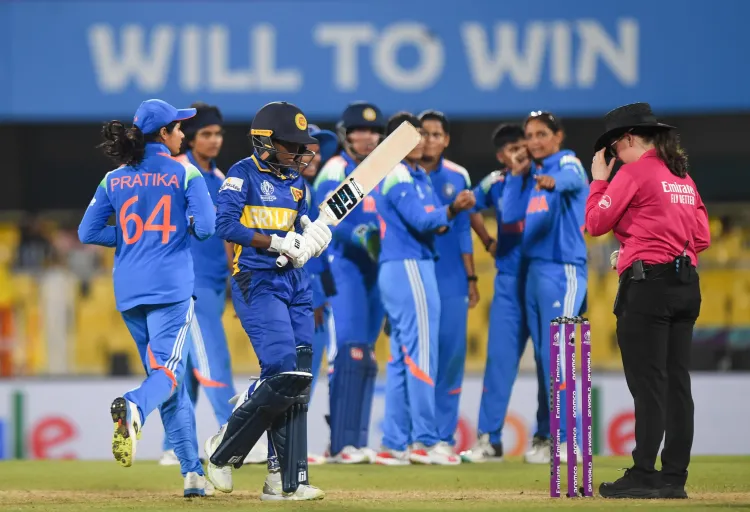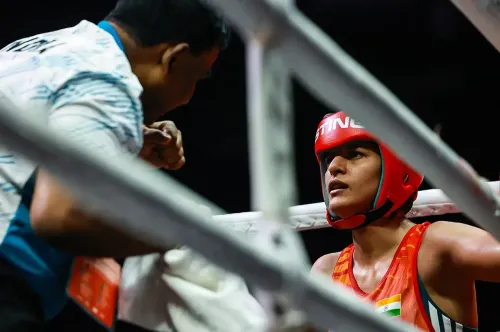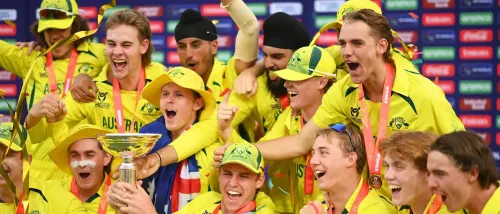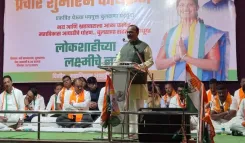Are Team India Prepared for the High-Pressure India-Pakistan Clash in the Women's World Cup?

Synopsis
Key Takeaways
- India vs Pakistan matches are high-pressure events.
- The team has focused on pressure simulations in preparation.
- Consistency in performance is crucial for success.
- Fitness improvements directly influence fielding efficiency.
- Managing expectations and external distractions is essential.
Colombo, Oct 5 (NationPress) Former Indian cricketer and selector Saba Karim expressed his views on the highly anticipated India-Pakistan match in the Women’s World Cup, delving into India’s preparations, significant hurdles, and essential points to observe as the tournament progresses.
India has made a strong start, securing a 59-run victory against Sri Lanka in the tournament opener last week. Now, they will face another formidable Asian opponent, Pakistan, who faced a setback against Bangladesh in their opening match.
“There will be pressure. This is what elevates the India vs Pakistan rivalry to such high stakes, even in the Women’s World Cup. Otherwise, it wouldn’t hold as much significance. India has faced Pakistan before and generally performed well. However, with the controversies that often arise around these matches, I’m certain that the Indian team management and players have devised simulations to handle the pressure,” Karim remarked on JioHotstar.
“The optimal strategy for India and the team management is to eliminate all external distractions and concentrate solely on the upcoming game. I am confident that, with the experience of the Indian players and their support staff, the team will deliver a robust performance without being swayed by controversies. Nonetheless, I acknowledge that some pressure will be present for the Indian side,” he added.
As co-hosts of the tournament alongside Sri Lanka, India enjoys a home advantage and is considered a favorite to clinch the title. Karim highlighted the challenges the Women in Blue might encounter as they advance, stating, “For India, the greatest challenge will be maintaining consistent form, both individually and collectively. For a player like Smriti Mandhana, sustaining her performance level throughout the tournament will be a formidable task, given that the team will compete at various venues against a diverse range of opponents.”
“The same applies to the other players. Experienced athletes require robust recovery programs to stay at their peak. Additionally, there will be pressure due to rising expectations.
“India is being regarded as a strong contender for the World Cup title, which will add to the pressure. However, I am confident that, as a unit, India can withstand this pressure and embrace the challenges that lie ahead. These factors are crucial for India’s success,” he concluded.
The team encountered some injury concerns prior to launching their campaign, as Arundhatti Reddy sustained a leg injury during a warm-up against England. Furthermore, Sneh Rana appeared to be struggling during her performance against Sri Lanka in the tournament opener.
Regarding India’s fielding and fitness levels, Karim commented, “In terms of catching efficiency, only New Zealand ranks at the top. Even Australia and England have not performed exceptionally. However, the Indian team is persistently striving to enhance this aspect. From my observations during practice sessions, the team invests substantial time, even in one-on-one drills, focused on catching. It’s an ongoing process, but India’s fitness levels have significantly improved, which inherently boosts fielding performance.”
“The team management, particularly the fielding coach, is diligently working towards this goal. The aim is to minimize drop-catch percentages, which will help India stay in contention for the World Cup,” he concluded.
vi/bc









